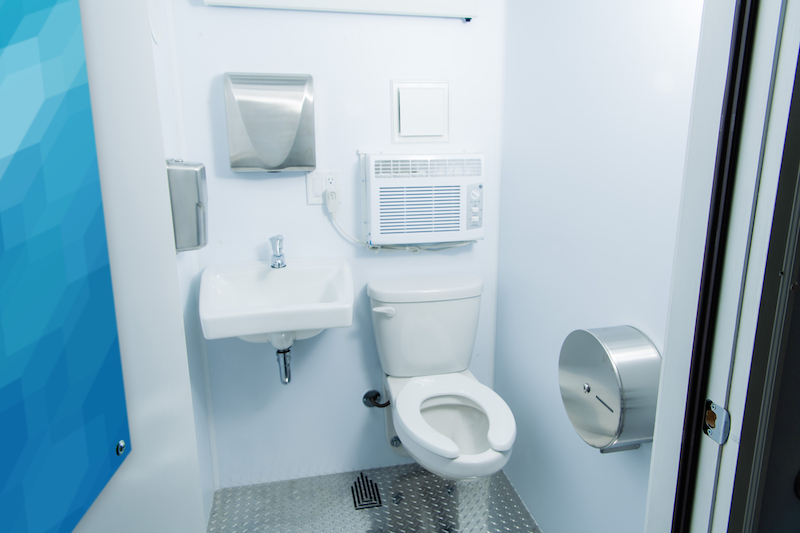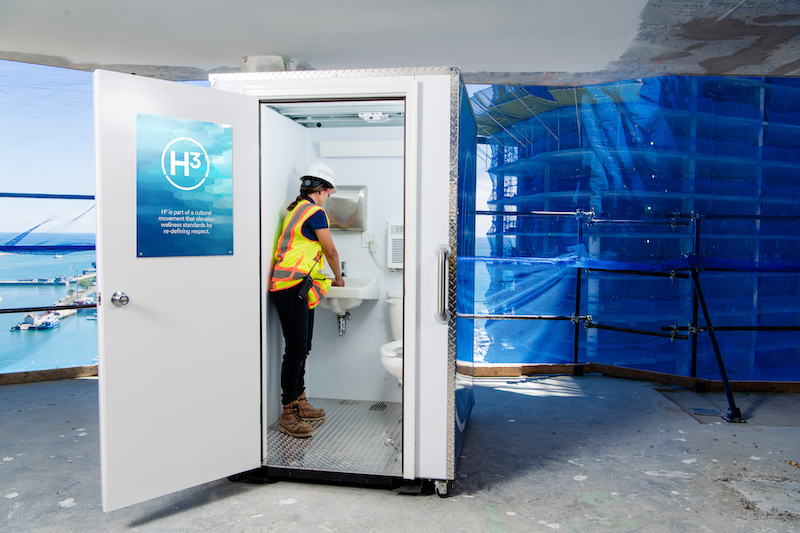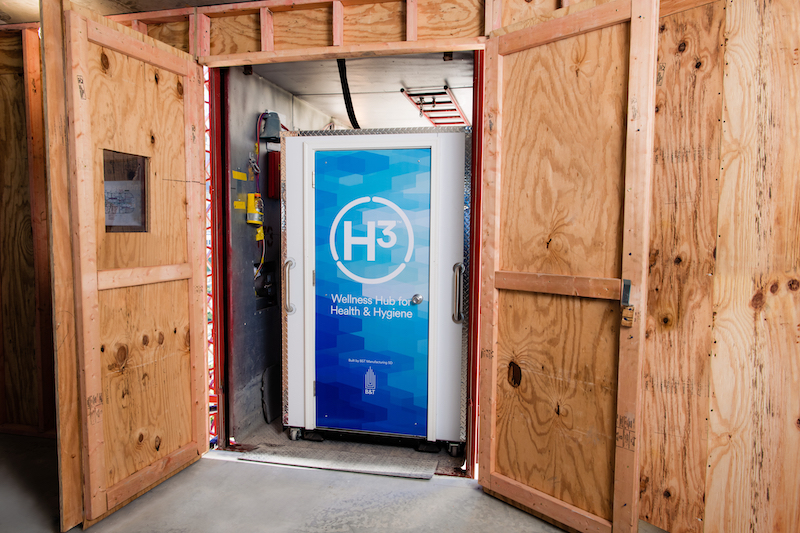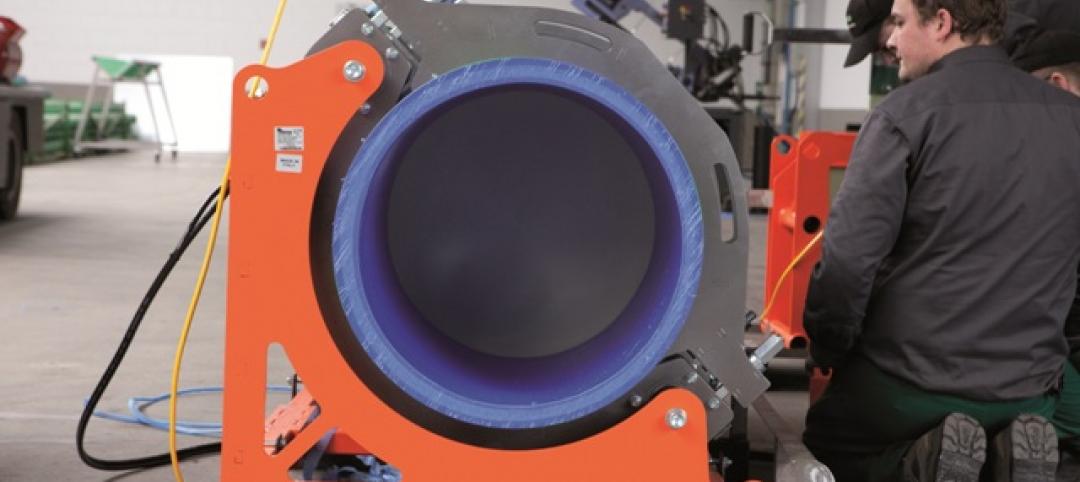In the annals of jobsite productivity, the portable restroom—better known as a porta potty or Porta John—has played a prominent, if underappreciated, role.
Dating back to the 1940s, these single-occupant restrooms within fiberglass boxes are essential fixtures in construction management. And there have been advances along the way: in 2016, for example, a New York-based supplier named Callahead introduced Waterloo, a self-contained system that Callahead touted as giving users the look, feel, and comfort of a home bathroom.
But portable restrooms can’t always be conveniently placed, especially on high-rise projects where bathroom breaks can be an arduous, time-consuming process.
BUILT TO ACCOMMODATE TIGHT SPACES
Lendlease thinks it’s found a solution to this dilemma with its H3 Wellness Hub, a modular bathroom system whose design optimizes mobility, installation, and maintenance. (The three “H”s stand for hub, health, and hygiene.)
Lendlease invented H3, and has licensed its exclusive manufacturer, B&T Manufacturing in Black Hawk, S.D., to market and sell the units that are 60-1/8 x 49 x 82 inches (length, width, height, outside) and 49 x 44-1/4 x 75 inches (inside). Lendlease started rolling out H3s last November and there are currently eight in the field and 11 more scheduled for delivery within the next month in New York, Los Angeles, San Francisco, and Chicago.
B&T is in negotiations with other Porta John suppliers and subcontractors.
The H3s are designed to accommodate tight spaces. They can fit in a construction hoist or be lifted by crane vertically onto a project’s site. Their built-in wheel system can lock in place or be rolled around for versatile positioning.
MULTIPLE HOOKUP OPTIONS
 Chemicals aren't needed to clean the interior of H3s, which can by connected to septic tanks or city utilities.
Chemicals aren't needed to clean the interior of H3s, which can by connected to septic tanks or city utilities.
The units provide an enclosed, climate-controlled space that can be connected to standalone septic tanks or directly, on single or multiple floors, to sanitation, fresh water, and electrical utility risers. Conventional cleaning materials can be used, thereby eliminating the need for chemicals that are common in most portable restrooms. (A wall-mounted toilet allows for obstruction-free floor cleaning.)
H3s include HVAC, hot water, natural lighting (via a translucent roof), and porcelain fixtures. UV options are available for germ and bacteria prevention.
Tim Torpey, B&T’s general manager, tells BD+C that his company isn’t sharing pricing information publicly, preferring instead to have customers call and request a price quote. Torpey adds that B&T is offering volume discounts.
 The units are designed to make personal hygiene more convenient for jobsite workers.
The units are designed to make personal hygiene more convenient for jobsite workers.
Related Stories
| Oct 4, 2011
GREENBUILD 2011
Click here for the latest news and products from Greenbuild 2011, Oct. 4-7, in Toronto.
| Oct 4, 2011
GREENBUILD 2011: Johnsonite features sustainable products
Products include rubber flooring tiles, treads, wall bases, and more.
| Oct 4, 2011
GREENBUILD 2011: Large diameter polypropylene-random pipe unveiled
Available in North America for large scale piping applications including high-rise buildings, large chilled water systems, district energy, and water mains.
| Oct 4, 2011
GREENBUILD 2011: Ready-to-use wood primer unveiled
Maintains strong UV protection, clarity even with application of lighter, natural wood tones.
| Oct 4, 2011
GREENBUILD 2011: Two new recycled glass products announced
The two collections offer both larger and smaller particulates.
| Oct 4, 2011
GREENBUILD 2011: Mythic Paint launches two new paint products
A high performance paint, and a combination paint and primer now available.
| Oct 3, 2011
Magellan Development Group opens Village Market in Chicago’s Lakeshore East neighborhood
Magellan Development Group and Hanwha Engineering & Construction are joint-venture development partners on the project. The Village Market was designed for Silver LEED certification by Loewenberg Architects and built by McHugh Construction.
| Sep 28, 2011
Bradley sponsors design studio on intelligent buildings for UWM SARUP
The studio is taught by Gregory D. Thomson, assistant professor and co-director of the Institute for Ecological Design at UWM.















